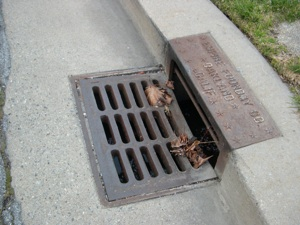Mosquito Sources

The above photo shows a portion of the Elkhorn Slough Sanctuary near Moss Landing in Northern Monterey County. It is the District’s largest source for salt marsh mosquitoes, which have a 20 mile flight range.
Swimming Pools

Swimming pools: Most of the time, well maintained pools are not a problem, however, when a pool is neglected, it becomes a stagnant water breeding ground for mosquitoes.
Solution: Maintain your pool! If you can’t do that, contact our office and ask about getting mosquito fish. These fish can easily survive in your pool, and they’ll devour the mosquito larvae. You may anonymously report a neglected pool or hot tub in your neighborhood.
Containers & Old Tires

Containers & Old tires: Most people don’t realize how perfect this backyard source is for mosquitoes. People leave their old tires outside, they catch rain, and it’s almost impossible to empty out all the water inside. If even a little water is left in the tire is enough for mosquitoes to breed in.
Solution: The best solution is to simply get rid of the tires. Take them to the dump, or pay a tire store or gas station to recycle them for you. If for some reason you feel the need to keep them, drill some holes into them so they can drain, and keep them in a place where they’ll stay dry. You may anonymously report tires accumulating in a yard or property nearby.
Clogged Rain Gutter

Clogged rain gutter: It happens every year. The trees lose their leaves, dropping them onto your roof, and the yearly rains and winds carry the leaves into your gutter, creating little pools of standing water. They last longer than you realize, and when mosquito season comes around, they have the perfect place to breed.
Solution: Clear out the rain gutter–before the weather becomes too warm.
Storm Drains

Storm drains: This is a two-edged sword. In the rainy season, they keep the streets from becoming lakes and rivers. However, in warmer times, they become a problem, as they can trap a small amount of water in an area sheltered from the sun–a perfect place for mosquito breeding.
Solution: For the most part, you don’t have to worry about this. The NSVMAD checks storm drains on a regular basis. If you see a clogged drain that is allowing water to stand for more than 5 days, please contact the District.
Street Gutters

Street gutters: That little area that divides the sidewalk from the street. It channels water away after rainstorms and from your car washing to the nearest storm drain. On occasion, these gutters don’t work properly. For various reasons (like a tree lifts the pavement, pavement sinks), the street gutters pool the water instead of draining it away, and they become the perfect neighborhood for mosquitoes–just beyond your front yard.
Solution: The chief culprit of this problem is the overwatering of front yards. Keeping to a regular schedule of watering can do quite a bit toward solving the problem. Call the NSVMAD to report water standing for more than 5 days.
If the pavement is lifted in any way, or is improperly sloped, call your local public works; the street is the jurisdiction of the city, and it’s their obligation to fix it. If on the other hand you’re feeling civic-minded, grab a broom and sweep the water away!
